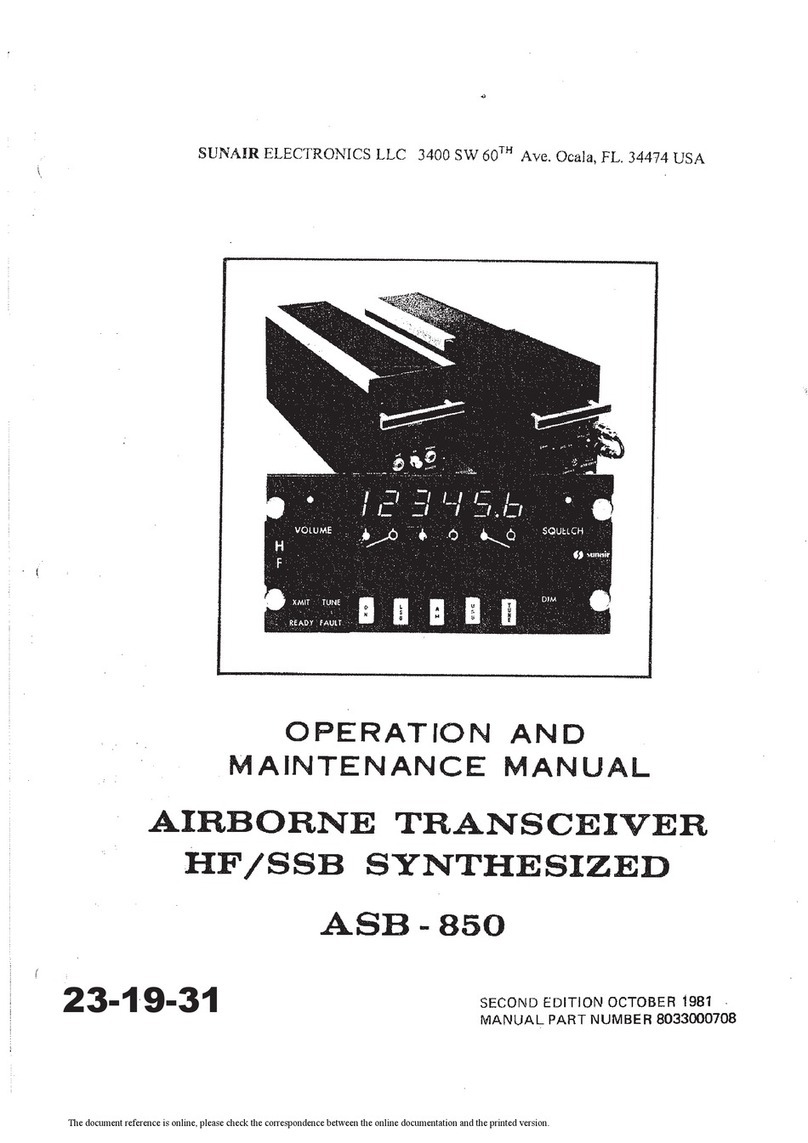
SUNAIR ASB·5OC
SECTION
II
INSTALLATION
2.1
GENERAL
Section
II
contains all necessary instructions for the unpacking, inspection, and if necessary, reshipping
of
damaged equipment or parts. In addition, further information regarding location and mounting considerations,
powerrequirements, antennaand ground system hook-upsandfinal checkoutsafterinstallation is also provided.
2.2 UNPACKING AND INSPECTION
As soon as you have received your unit(s), unpack and inspect all components and accessories. Check the
packing list to
be
sure you have received all items ordered, and that all items necessaryfor operation have been
ordered. INOTE: I Be sure to retain the carton and its associated packing materials
should it
be
necessary to reship damaged equipment.
Do not accept a shipment when there are visible signs
of
damage
to the cartons until a complete inspection is
made.
Ifthere
is a shortage
of
items
or
anyevidence
of
damage, insiston a notation tothat effect on the shipping
papersbeforesigningthereceiptfrom thecarrier. Ifconcealed damageisdiscoveredaftertheshipmenthasbeen
accepted, notify the carrier immediately
in
writing and await his inspection before making any disposition
of
the
shipment. Afull report
ofthe
damageshould also
be
forwardedtoSunair's Product Services Department. Please
be sure to include the following information for prompt service:
a) ORDER NUMBER.
b)
MODEL
AND
SERIAL
NUMBER.
c)
NAME
OF
TRANSPORTATION AGENCY.
d) APPLICABLE DATES.
Upon receipt
of
this information arrangements will
be
made, by Sunair, for repair or replacement.
2,3 RETURN OF EQUIPMENT TO FACTORY
The
shipping carton fortheASB-500 hasbeen designedtoprotecttheequipmentduring shipment.
The
container
and its associated packing materials should
be
used to reship the unit. When necessary to return equipmentto
Sunair for warranty or non-warranty repair, an authorization
number
is required. This number can be obtained
from
our
Product Services Department:
TELEPHONE: (954) 525-1505,
FACSIMILE: (954) 765-1322.
If the original shipping carton is not available, be sure to carefully pack each unit separately, using suitable
cushioning material where necessary. Very special attention should be given to providing enough packing
material around connectors and otherprotrusionsfrom the unit. Rigid cardboard should be placed atthe corners
of
the equipment to protect against denting. DO
NOT
USE DUNNAGE (STYROFOAM PEANUTS) FOR
PACKING PROTECTION, they mayallowthe
unitto
shiftwhile being shipped, and, therefore, becomedamaged.
2·1


































